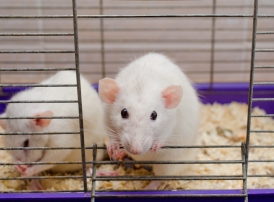For years I underestimated just how complex psychology studies are at first glance for brand new IB Psychology students, so I’ve made a deliberate effort in my new course to have a real gradual introduction into studies. 
For this activity, I like to have students in groups of three to four. They are given four studies from the criminology unit (summaries can be found below) and they have 15 minutes to be able to write a one sentence conclusion about each study. How they divide the work is completely up to them. They could work through them together as one group, take on each and figure it out and then explain it, it doesn’t matter.
What I do tell students is that I will be randomly calling on students for their conclusion from the studies, so they need to make sure that they comprehend each study’s basic conclusion.
For this activity it might pay to briefly explain that the conclusion from an experiment is how an IV is affecting a DV (I allow some space in my workbook for some scaffolding with this).
Read more:
- Lesson one on how to “explain” a study (link)
This lesson idea is designed to go with the Introductory chapter, Topic 1.2 (b), Applying Conclusions (Download FREE Introduction to Psychology Teacher Support Pack HERE).
Grafman et al. on the brain and aggression
In this study there were three groups that were compared in order to study the effects of brain damage on aggression. There were three groups in the study:
- Veterans with damage to their frontal lobes
- Veterans with damage to other areas of their brains
- Veterans with no damage to their brains
Their levels of aggression was measured by having the participants fill out questionnaires asking about their behaviour, and their family members also filled out questionnaires.
The results showed that the group with damage to their frontal lobes were the most aggressive.
(More info)

Albert et al. on testosterone and aggression in rats
To find out if the hormone testosterone influences aggression, this study involved castrating (removing testicles) of male rats. Because testosterone is produced in the testes, castration would reduce testosterone levels.
In this experiment the groups that were castrated were compared to a control group (not castrated). The results showed that the castrated rats’ levels of aggression were reduced. When they were injected with testosterone their levels of aggression were restored.
(More info)

Castrating animals reduces their levels of aggression as it prevents the production of testosterone. This has been observed in numerous rat (and other animal) studies.
Passamonti et al. on the influence of serotonin on the brain
Serotonin is a neurotransmitter (a chemical in the brain) that has been shown to be involved in numerous behaviours, including impulsive behaviour and aggression. In order to see if serotonin affects specific parts of the brain, these researchers gave participants two different drinks on two different days. One of the drinks was designed to reduce serotonin while the other was a placebo (i.e. there was no effect). After they drank the drink, they were put in a brain scanner and their brain activity was measured while they were viewing emotional faces.
The results showed that when the participants drank the drink that reduced serotonin their was a reduction in the activity in a part of their brain called the prefrontal cortex.

Correlations between serotonin and impulsive actions might be explained through the influence of serotonin depletion on the function of the prefrontal cortex.
(More info)
Bandura and the effects of observation of violence
There has been a long-standing debate as to the effects of watching violent media (e.g. TV). Bandura conducted an experiment to observe the effects of watching violent TV or even just watching other people being violent.
In one of his studies, he observed children around 3 – 5 years old. There were four groups of children in the study:
- One group watched an adult beating up an inflatable doll
- One group watched a video of an adult beating up the inflatable doll
- One group watched a video of an adult dressed as a cat beating up the doll (to simulate “fantasy”)
- One group didn’t watch anything
After watching (or not, as was the case in the control condition), the children were placed in a room and their violent behaviours were observed. The results of the study showed that the children who watched violence of some sort demonstrated a lot more aggressive actions than those who didn’t watch anything.
(More info – this will take you to a video of this study)
I like this basic activity because it involves a bit of collaboration, some pretty straightforward studies and they’re studies that we’ll look at in the second unit (Criminology). If you’ve got any ideas on how to improve it or questions about the studies, please feel free to leave a comment.
Updated Aug 2019
Travis Dixon is an IB Psychology teacher, author, workshop leader, examiner and IA moderator.